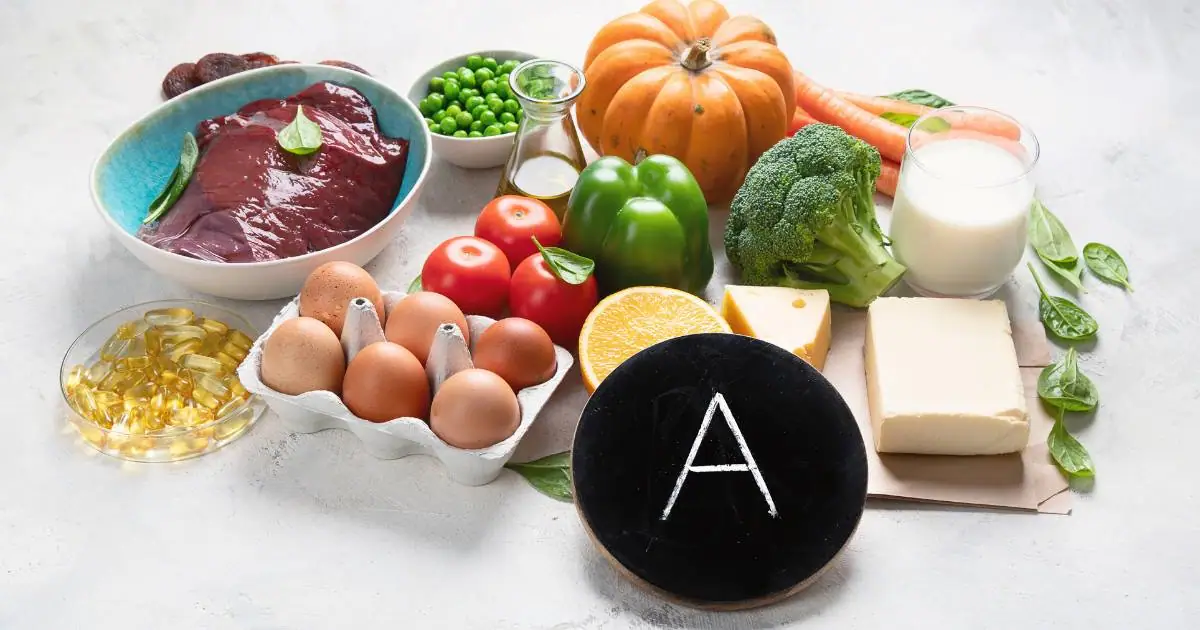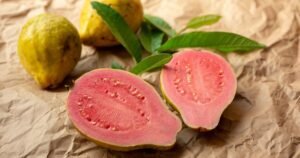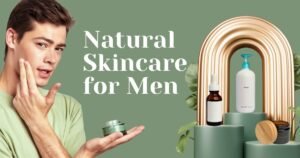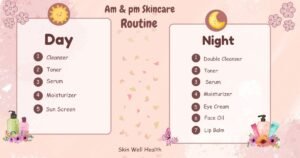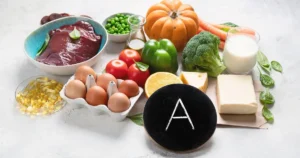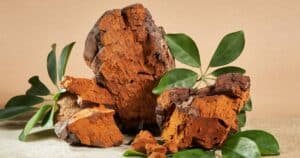Don’t Miss: 12 Secret Natural Sources of Retinol for Skin
Are you tired of expensive creams and other products for your skin? Then it’s time to use the power of nature, which you can find in your own kitchen.
Do you know about retinol, which has many natural benefits for your skin? Retinol, which is a form of vitamin A, is famous for its effective benefits for the skin.
From reducing fine lines and wrinkles to treating acne, this powerful ingredient is an important part of many skin care routines…..
But did you know that retinol can also be found in many natural food sources? In this blog post, I will show you the 12 best natural sources of retinol and beta-carotene, an antioxidant that our bodies convert into retinol (vitamin A).
These foods can be a beneficial addition to your diet. Yes, if you want to improve your skin’s look and your overall health…. : )
First, let’s know: What is Retinol?
Retinol is a fat-soluble vitamin that is important for many types of body functions and is a form of vitamin A. It is one of the most well-known retinoids, a group of compounds derived from vitamin A [1].
Vitamin A has two forms, such as retinol and beta-carotene, but they are different from each other for their structure and sources [1].
Beta-carotene is type of carotenoids which comes from plant sources and retinol comes from animal sources [1] that we’ll discuss below…. : )
The main connection between beta-carotene and retinol is that our body converts beta-carotene into retinol [1].
This process is regular, which means that the body will only convert beta-carotene into retinol when it needs to. This reduces the risk of getting too much vitamin A (toxicity) from dietary foods.
Benefits of Retinol for the Skin
A study shows that retinol can give many benefits to skin [1, 2], which are as follows:
-
- Boosts collagen production
-
- Reduces scares, fine lines and wrinkles (makes skin look younger)
-
- Improves skin texture (removes dead skin cells, makes skin smoother and more even)
-
- Clears spots (dark spots, sun spots) and hyperpigmentation
-
- Acne treatment (Populer) clears acne, acne scares, unclogs pores, and reduces breakouts
-
- Clears warts, psoriasis, and other skin disorders
-
- Prevents signs of aging
-
- Protects the body from different cancers, such as melanoma skin cancer
-
- Increases skin elasticity
-
- Hydrates and brightens the skin
-
- Its antioxidant properties protects skin from the sun (sun damage)
-
- It reduces the risk of several cancers, including skin cancer (melanoma, carcinomas)
12 Natural Sources of Retinol for Skin (Preformed Vitamin A)
So, knowing so many benefits for skin, you will surely be excited to know its natural sources. So, let’s discuss:
1. Liver (Beef Liver)
Beef liver is one of the richest natural sources of retinol. Its small amount provides more vitamin A (retinol) than the recommended daily amount. Therefore, liver is not recommended for pregnant women [3, 4].
Besides having retinol, beef liver is a powerhouse for overall good health because it is high in important nutrients, including iron, copper, vitamin B12 and more [4].
How to Use. Add beef liver to your diet. You can try delicious recipes of beef liver, such as:
- Liver and Onions
- Liver Pâté
- Southern Fried Liver
- Liver and Bacon
- Grilled Beef Liver
2. Egg Yolks
Studies suggest that egg yolks are excellent sources of retinol and also rich in other beneficial nutrients like vitamin A, D, E, K, B1, B2, B5, B6, B9, and B12 [5].
Hen and quail egg yolks could provide between 42 and 70.7% of an adult man’s vitamin A requirements [6].
How to Use. Include egg yolks in your daily diet and enjoy them as part of a balanced breakfast, in salads, or in these delicious recipes:
- Homemade Mayonnaise
- Crème Brûlée
- Hollandaise Sauce
- Lemon Curd
- Pastry Cream (Crème Pâtissière)
3. Fatty Fish (Salmon, Mackerel)
Fatty fish like salmon and mackerel are not only rich in retinol but also packed with omega-3 fatty acids. Because of their anti-inflammatory qualities, these healthy fats are well known. Omega-3 fatty acids, proteins, vitamin D, and retinol (vitamin A) are also all possible to get from fish oils such as mackerel and salmon [7, 8].
How to Use. Enjoy grilled or baked fish, or try it with salads and sushi. You can also try these mouth-watering (delicious) recipes:
For Salmon..
- Grilled Salmon with Lemon and Dill
- Baked Salmon with Honey Mustard Glaze
- Smoked Salmon Bagel
- Teriyaki Salmon
- Salmon Tacos
For Mackerel..
- Mackerel Salad
- Mackerel in Tomato Sauce
- Smoked Mackerel Dip
- Grilled Mackerel with Garlic and Lemon
- Mackerel Patties
4. Dairy Products (Milk, Butter)
According to a study, dairy products like milk and butter contain 10 μg retinol and 6 g carotenoids per g of fat. Which means that they are high in retinol [9].
Milk and other dairy products are also rich in minerals (Ca, Mg, Na, K, P, Cl, Fe, Cu, Zn, and Se) and vitamins (A, B, C, D, E, and K) [10].
How to Use. You can use regular milk, cheese, and butter; if you’re worried about cholesterol, use low-fat options. You can also use dairy products in different popular and tasty dairy recipes, such as:
- Macaroni and Cheese
- Creamy Mashed Potatoes
- Clam Chowder
- Pancakes
- Rice Pudding
- Butter Cookies
- Garlic Butter Shrimp
- Cornbread
- Buttermilk Biscuits
- Lemon Butter Chicken
Plant-Based Sources of Beta-Carotene (Provitamin A)
As we mentioned above, the body converts beta-carotene into retinol. Therefore, you can also get retinol from beta-carotene natural sources. Beta-carotene is found in plant-based sources such as various fruits and vegetables, such as:
5. Bakuchiol
Bakuchiol is a plant-based alternative to retinol, derived from the seeds of the Psoralea corylifolia plant. Because it works like retinol without causing irritation, it has become more popular in skin care. Bakuchiol is known for its properties that reduce wrinkles, fine lines, and hyperpigmentation on the face [11, 12].
Bakuchiol also treats skin conditions like eczema, atopic dermatitis, and rosacea, as well as anti-aging and inflammation reduction [11].
How to Use. Look for serums, oils, or creams that have bakuchiol. It is recommended to use it in a nighttime routine because your face may be more sensitive to the sun during the day.
But if you want to use it during the day, it is important to use your sunscreen before applying Bakuchiol products.
6. Mangoes
Mangoes are not only tasty fruits but also rich in beta-carotene. They are also rich in vitamin C, which increases the skin’s glow. Studies found that mangoes have anti-inflammatory and anti-cancer effects [13, 14].
How to Use. Eat them as desserts, in smoothies, or simply as snacks. You can also try them with these mango recipes:
- Mango Salsa
- Mango Smoothie
- Mango Salad
- Mango Sorbet
- Mango Chicken
- Mango Chutney
- Mango Margarita
- Mango Lassi
- Mango Cheesecake
- Mango Sticky Rice
7. Apricots
Turkey is the main producer of apricots, and they are rich in 9 minerals (Zn, Ca, Cu, Fe, Mg, Na, Mn, P, and K) as well as beta-carotene (retinol) [15]. Vitamin C was found to be higher than other nutrients [16].
Apricots are beneficial for cancer (breast cancer), have antioxidants, and have anti-inflammatory properties [15].
How to Use. Eat them directly or try them with different recipes:
- Apricot Jam
- Apricot Glazed Chicken
- Apricot Tart
- Apricot Cobbler
- Apricot Scones
- Apricot Salad
- Apricot Bars
- Dried Apricot Compote
- Apricot Chutney
- Apricot Smoothie
8. Cantaloupe
Cantaloupe fruit is very refreshing and contains a lot of beta-carotene. It’s excellent for hydrating your skin and body. It also has great vitamin A and vitamin C, which make it more beneficial for your skin, like other natural resources of retinol [17].
How to Use. Cantaloupe can be enjoyed fresh, in fruit salads, or in smoothies.
9. Sweet Potatoes
Oh, yummy sweet potatoes…. Studies suggest that sweet potatoes are rich in beta-carotene (retinol), which helps to reduce your vitamin A deficiency [18, 19].
Also rich in vitamin C and antioxidants, which help to fight free radicals, ageing, and sunburn and make your skin younger, brighter, and acne-free [19].
How to Use. As a healthy side dish, you can roast, mash, or bake them. Or try these popular sweet potato recipes:
- Sweet Potato Casserole
- Roasted Sweet Potatoes
- Sweet Potato Pie
- Sweet Potato Fries
- Mashed Sweet Potatoes
- Sweet Potato Soup
- Sweet Potato Hash
- Baked Sweet Potatoes
- Sweet Potato Pancakes
- Sweet Potato Chilli
10. Carrots
Carrots are rich in beta-carotene (retinol) and the main source of vitamin A. Carrots have antioxidant effects that protect your skin from sunburn, cancer, ageing, acne, and dark spots [20].
Carrots also have vitamin C, giving you glowing, clear, and healthy skin [20]. A study suggests that stir-fried carrots have much more beta-carotene than raw carrots [21].
You can also use carrot seed oil on your skin if you have eczema and dry skin because it’s moisturizing properties that make your dry skin moisturized and glowing.
How to Use. Enjoy carrots in your meal….Or try these delicious carrot recipes:
- Glazed Carrots
- Carrot Cake
- Roasted Carrots
- Carrot Soup
- Carrot Slaw
- Carrot Salad
- Carrot Muffins
- Carrot and Ginger Soup
- Honey Roasted Carrots
- Carrot and Raisin Salad
11. Pumpkin
Pumpkins are filled with beta-carotene, vitamin C, vitamin E and other nutrients [22].
Pumpkins have a lot of benefits for our body, such as protecting us from heart disease and cancer, containing antioxidants that protect us from free radicals and sun damage, and more…. [22]
How to Use. Try this sweet and delicious source of vitamin A (retinol) in your meal or diet and enjoy it. Or find out its recipes such as:
- Pumpkin Pie
- Pumpkin Bread
- Pumpkin Soup
- Pumpkin Muffins
- Pumpkin Spice Latte
- Pumpkin Cheesecake
- Pumpkin Pancakes
- Pumpkin Cookies
- Pumpkin Risotto
- Pumpkin Chilli
12. Spinach and Kale
Spinach and kale are leafy greens both high in beta-carotene (retinol), vitamin C, and other beneficial nutrients. They also have antioxidant properties [23, 24].
How to Use. You can try the following delicious recipes:
For spinach…..
- Spinach Salad
- Creamed Spinach
- Spinach Artichoke Dip
- Sautéed Spinach with Garlic
- Spinach Smoothie
- Spinach Pesto
For kale…..
- Kale Salad
- Kale Chips
- Sautéed Kale with Garlic
- Kale Smoothie
- Kale and White Bean Soup
- Kale Pesto
Precautions and Side Effects of Retinol
However, these natural sources of retinol are safe to eat, but taking too much retinol and beta-carotene can make them dangerous (toxicity) for your body [1].
Therefore, you should consult your healthcare provider before adding these natural sources to your diet. Your healthcare provider will make a proper diet routine to add these foods to your diet.
Especially pregnant women should not take too much retinol, which can cause abnormalities in pregnancy [1].
Also, if you are taking these retinol natural sources, you should not take other vitamin A supplements [1].
As a result of taking too much retinol (vitamin A), you can face the following problems [1]:
- Fever
- Nausea
- Joint and muscle pain
- Diarrhea
- Hair loss
- Skin irritation
- Dry skin and lips
- Fatigue
- Liver failure
Final Thoughts
In final words, I hope you will take full advantage of these natural sources of retinol for your skin with your doctor’s guidance.
From vegetables and fruits to powerful ingredients like liver and bakuchiol, which are high in nutrients such as retinol, these natural options provide many benefits for your skin, such as reducing wrinkles to make your skin glowing and acne-free……
This guide tries to be a complete resource for anyone wanting to improve their skincare routine naturally by giving them detailed information, tailored ideas, and a deep understanding of the benefits of each natural source of retinol. Share your experiences in the comments below and let us know which natural sources of retinol have worked best for you!
Resources:
2. Improvement of Naturally Aged Skin With Vitamin A (Retinol)
3. A survey of vitamin A concentrations in the liver of food-producing animals
4. Beef, variety meats and by-products, liver, raw
5. The Golden Egg: Nutritional Value, Bioactivities, and Emerging Benefits for Human Health
6. Effect of thermal processing on retinol levels of free-range and caged hen eggs
7. Retinoids and carotenoids in finnish foods: Fish and fish products
8. [Carotenoids and vitamin A in fish]
9. Variation in retinol and carotenoid content of milk and milk products in The Netherlands
10. Milk and dairy products: a unique micronutrient combination
11. Clinical Evaluation of a Nature-Based Bakuchiol Anti-Aging Moisturizer for Sensitive Skin
15. Apricots: biochemistry and functional properties
19. Functional components in sweetpotato and their genetic improvement
20. A review: Food, chemical composition and utilization of carrot (Daucus carota L.) pomace
22. 9 Impressive Health Benefits of Pumpkin
23. Chapter 25 – Spinach and Carrots: Vitamin A and Health
24. Kale: An excellent source of vitamin C, pro-vitamin A, lutein and glucosinolates

